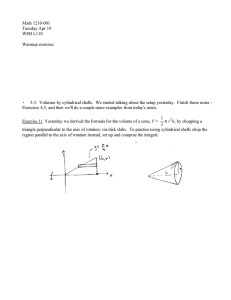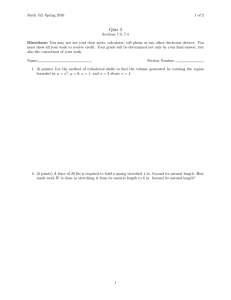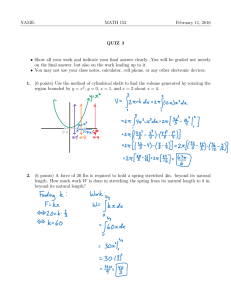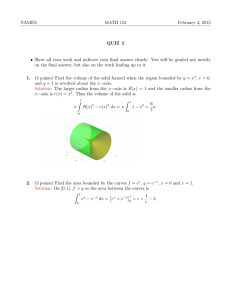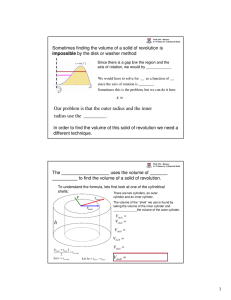Math 1210-001 Monday Apr 18 WEB L112
advertisement
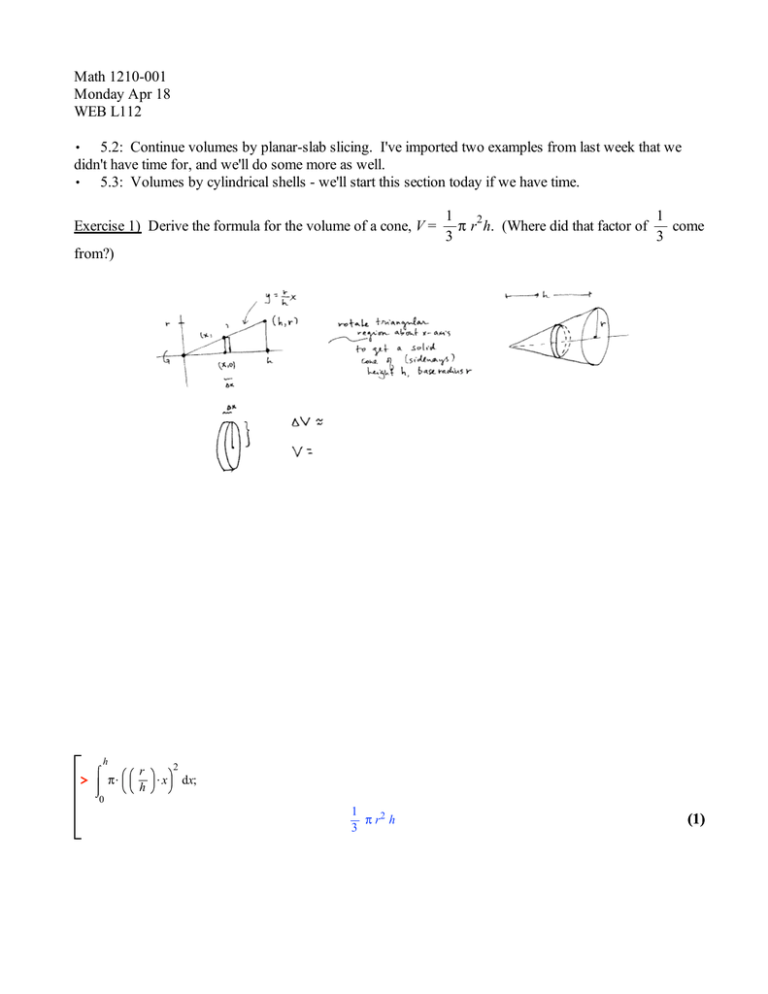
Math 1210-001 Monday Apr 18 WEB L112 , 5.2: Continue volumes by planar-slab slicing. I've imported two examples from last week that we didn't have time for, and we'll do some more as well. , 5.3: Volumes by cylindrical shells - we'll start this section today if we have time. Exercise 1) Derive the formula for the volume of a cone, V = 1 1 p r2 h. (Where did that factor of come 3 3 from?) h p$ > 0 r $x h 2 dx; 1 p r2 h 3 (1) Exercise 2) Consider the region in the first quadrant bounded above by the y = x , below by the x K axis, and on the right by x = 4. Rotate this region about the horizontal line y = 3. What is the resulting solid's volume? Set up the integral. 4 > p$ 9 K x dx; 0 (2) Exercise 3 (Lab 5g, special case of WebWork #9) Recover the formula for the volume of a solid ball of radius R by considering the solid generated by rotating the upper half disk, bounded above by 28 p y= R2 K x2 and below by the x K axis. , 5.3 Volumes by cylindrical shells Sometimes for a volume of revolution the, slab methods of section 5.2 are not the most effective and may not even work. There's another way to decompose these volumes - "cylindrical shells." With slabs we chop the region being rotated perpendicular to the axis of revolution, and the chopped pieces create slabs (usually disks or washers) when rotated. If instead we chop the region parallel to the axis of revolution, the rotated regions are cylindrical shells: Exercise 4) Consider the region in the first quadrant bounded above by the parabola y =Kx2 C 2 x =K x K 1 2 C 1, and below by the x K axis. Rotate this region about the line y =K1 and compute the volume with shells. Exercise 5) Set up the same volume computation with washers instead. DV= V= Exercise 4 solution: 2 2$ p$ x C 1 $ Kx2 C 2$x dx; > 0 16 p 3 (3) 16 p 3 (4) > Exercise 5 solution: 1 p$ > 0 > 2C 1Ky 2 K 2K 1 K y 2 dy;
